 This has already been an intense year for norovirus. According to the CDC, positive tests for the illness peaked at 16 percent in January and the season still has time to go — the virus typically peaks sometime between November and April. Relative to other seasonal illnesses, norovirus is highly infectious and spreads easily, particularly in spaces like restaurants. An infected person can shed billions of particles from the illness, while just a few particles can make someone else ill. As a result, norovirus passes easily through even brief contact with others, by touching contaminated surfaces or consuming contaminated food or beverages. Make sure your staff illness policies not only enforce the sanitation practices required to keep illnesses at bay, but also ensure staff with symptoms of norovirus aren’t allowed to work and create a larger number of absences on your team.  Little seems to spread more reliably than norovirus – or the fear of catching one. In a grab bag of seasonal illnesses, norovirus still stands out for its potential impact on businesses. According to a recent FDA study on norovirus prevention, excluding ill employees from the workplace had the biggest impact on consumer illnesses and also resulted in fewer norovirus cases. But the study also found that excluding ill employees was most effective when the business took extra precautions – such as increased handwashing in general, handwashing prior to the use of gloves, eliminating the need for employees to have hand contact with restroom surfaces, and improving the cleaning and sanitizing of restroom surfaces. Looking at these practices, is there room for your business to make changes? Doing so could help you dodge norovirus, along with other illnesses making the rounds this winter. 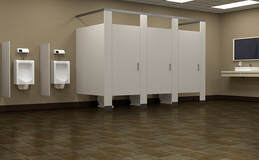 While Covid variants continue to be front-of-mind for restaurant operators, it can be easy to forget about the other seasonal illnesses that can impact a restaurant, particularly norovirus (which, although it can strike at any time of year, is known as the “winter vomiting bug” for a reason). Norovirus causes more foodborne illnesses than all bacterial pathogens combined. You can prevent its spread in your restaurant by having a food safety plan that considers your entire facility, including restrooms, your dining room and supply areas in addition to your kitchen. Reinforce with employees the need to wash hands even more frequently than usual with soap and water, and keep stations well stocked with soap and paper towels. Conduct training with staff on cleaning and sanitizing surfaces, including the proper solutions to use, as well as the amounts, applications and schedule of use. Finally, schedule frequent restroom cleanings and give staff a refresher on what procedures must be used when cleaning up after someone has been ill in your facility. This year has provided a stark wake-up call about the importance of protecting the safety of our food. Up-and-coming technology called hyperspectral imaging, which can detect pathogens in food, optimize the uniformity of a product’s quality and even help with precision agriculture, has been gaining ground rapidly in the food safety industry this year. In the coming months, it’s an additional feature to watch for and discuss with food suppliers and distributors, particularly as more foodservice operations adopt speed-scratch food products to help boost efficiency. Learn more about the technology here (https://bit.ly/2JcwyHC).
If the rapid spread of the coronavirus in recent weeks has proven anything, it is this: It is more important than ever to respect and reinforce the steps individuals can take to contain potential outbreaks. While the coronavirus is an extreme example of what can happen during an outbreak, virus outbreaks are likely to become an increasingly regular part of life as global warming contributes to a rise in new pathogens, according to the Centers for Disease Control and Prevention. While these pathogens may increase in variety and complexity, it will continue to be critical for people to follow a couple of simple practices to limit the spread of illness. As a physician and journalist who covered the SARS outbreak in China wrote recently in the New York Times, washing hands frequently and not coming to work when you are ill are the most important takeaways to remember when preventing the spread of pathogens. In addition, a Guardian report advises taking such precautions as covering your nose and mouth with a tissue (or with your elbow) when you cough or sneeze, then discarding the tissue and washing hands immediately after. Do your training procedures emphasize the most important steps workers can take to prevent the spread of illness in your facility?
If you had a norovirus outbreak at your restaurant, how would you make sure you effectively removed pathogens from your operation? A recent Food Safety Magazine notes that since there are not universal procedures for cleaning up after an outbreak, it can be an extra challenge for the 70 percent of foodservice operations that are independently owned and operated. Since affected surfaces need to be not just sanitized but also disinfected after cleaning following an outbreak, the usual cleaning protocols may not suffice. Use this chart as a reference to ensure you contain and properly disinfect the different affected areas of your establishment.
|
subscribe to our newsletterArchives
July 2024
Categories
All
|
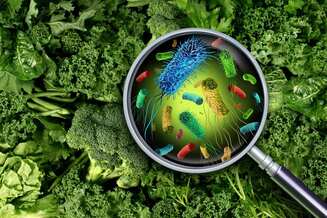
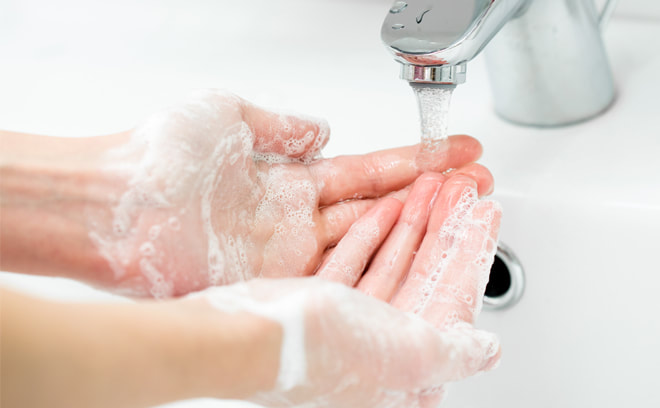
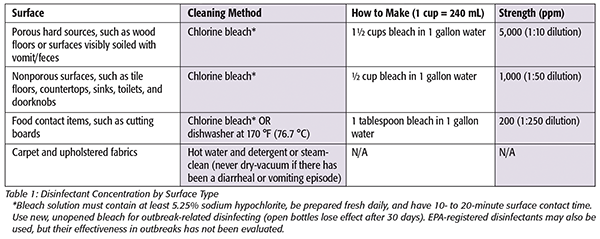


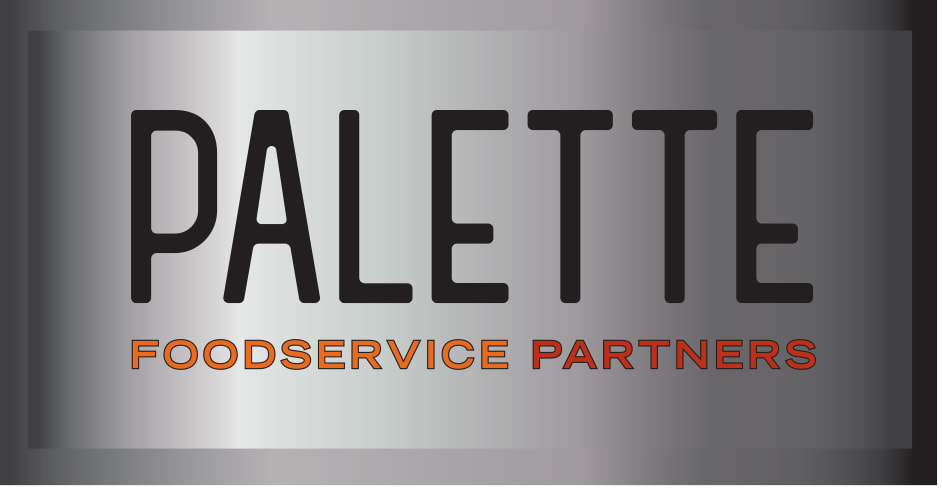
 RSS Feed
RSS Feed